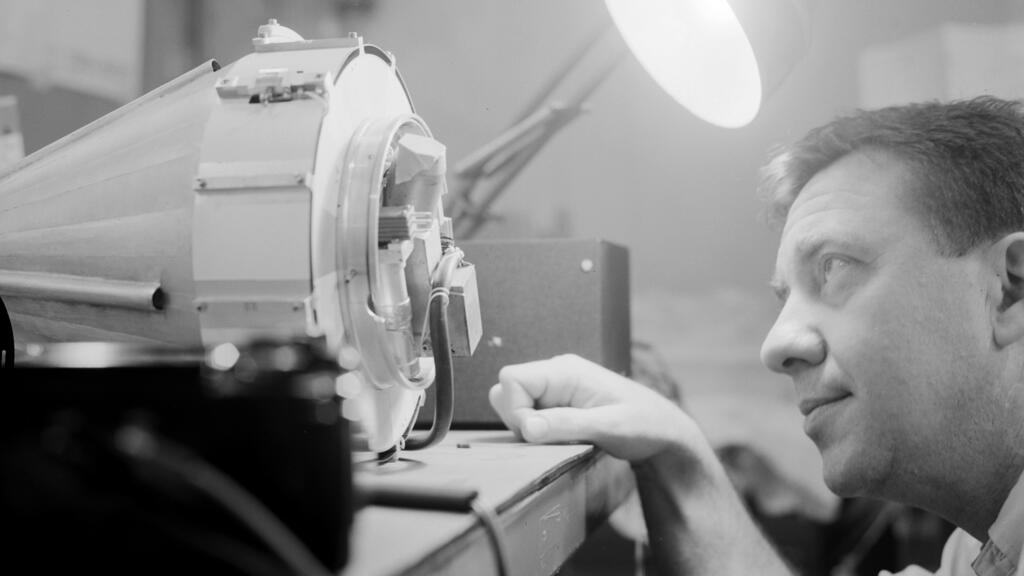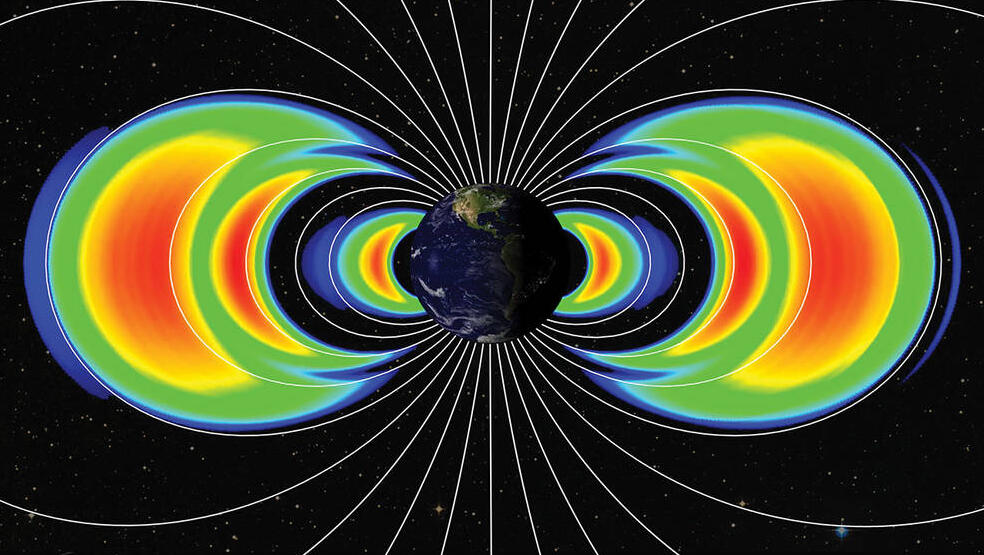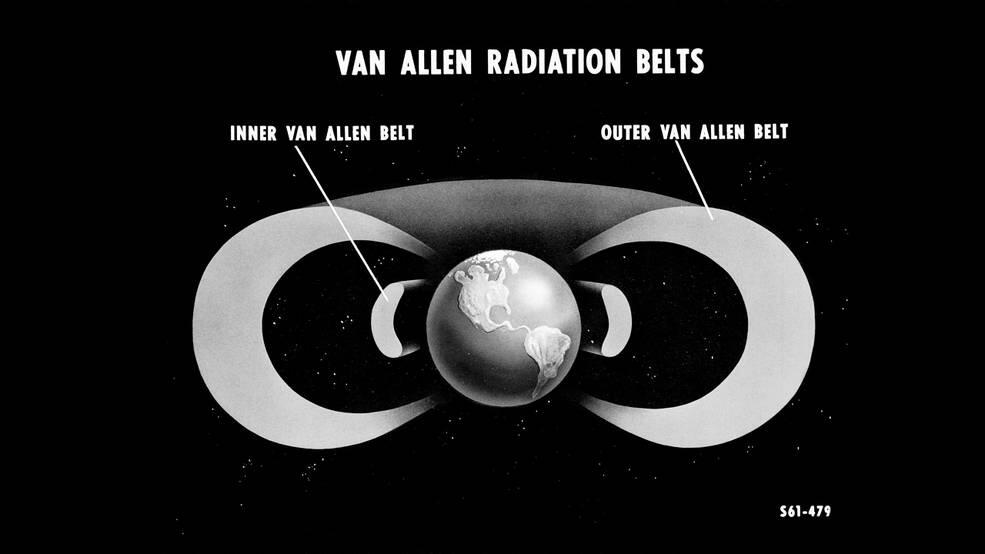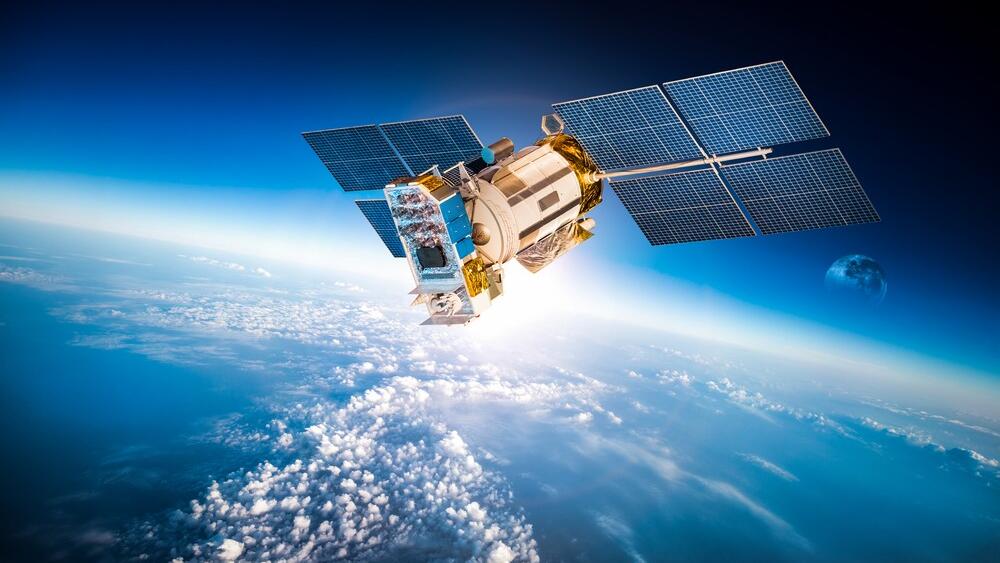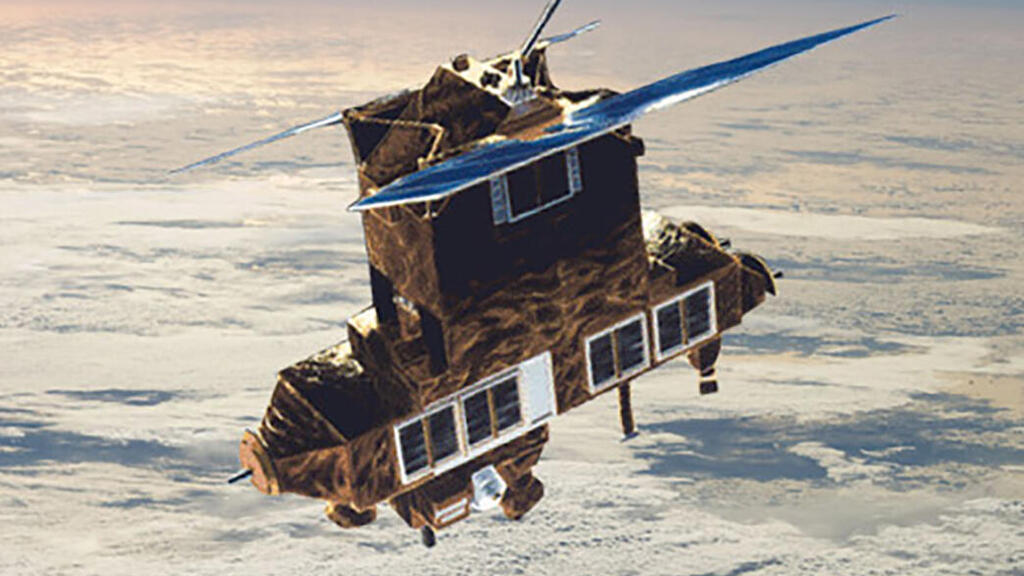Getting your Trinity Audio player ready...
"James Van Allen was one of the greatest and most accomplished American space scientists of our time, and few researchers had such a wide range of expertise in so many scientific disciplines," said Michael Griffin, NASA administrator, following Van Allen's death in 2006. "NASA’s path of space exploration is far more advanced today because of Dr. Van Allen’s groundbreaking work."
Van Allen is mainly remembered today for his discovery of the magnetic belts that shield Earth from radiation, now known as the Van Allen belts. But his contributions to science extended far beyond this discovery – from enhancing our understanding of the solar system to advancing international cooperation in space exploration.
Carpentry and glassblowing
James Van Allen was born on September 7, 1914, in Mount Pleasant, Iowa. His father, like his grandfather, was a lawyer and ensured that his four sons received a broad education. He would read books and magazines to them every evening after dinner. James, the second of the four, developed an early interest in science and technology, devouring popular science magazines and constructing various devices, including simple engines and a Tesla coil that produced sparks of lightning and made his hair stand on end - much to his mother’s alarm.
He was a brilliant student, graduating from his local high school as the top of his class. Van Allen himself testified that he excelled not only in mathematics and science but also in Latin and particularly in carpentry classes. In 1931, he began studying for a bachelor's degree at the local college, where both his parents and older brother had also attended. He enrolled in every science course offered by the college, focusing primarily on physics and chemistry, with some courses in astronomy and geology.
At college, Van Allen was mentored by physics professor Thomas Working in Poulter's lab, he not only honed his scientific knowledge but also gained hands-on skills in crafts such as welding, machining, soldering, and glassblowing. H
is talent for building laboratory instruments quickly became evident. When Poulter joined a research expedition to Antarctica, Van Allen constructed a seismograph for the team and conducted field tests on other instruments. Poulter even wanted him to join the expedition, but Van Aleen’s family opposed the idea, arguing that he was too young.
After graduating with honors, Van Allen pursued a master's and Ph.D. in physics at the University of Iowa. For his master’s thesis, he designed an instrument to measure minute changes in crystals, and for his doctoral work, he shifted to the emerging field of nuclear physics, investigating how radiation generates hydrogen isotopes.
At the age of 25, Van Allen completed his doctorate and became a research associate at the Carnegie Institution for Science in Washington. There, he continued his work in nuclear physics while also exploring fields like geomagnetism and atmospheric physics, which would greatly influence his future work.
Proximity fuze
In 1940, as the winds of war from Europe began to reach the United States, Van Allen joined a group of researchers working on developing a proximity fuze—designed to detonate a bomb's warhead within a certain distance of the target without requiring a direct hit.
This type of fuze was crucial for various types of ammunition, including anti-aircraft guns, torpedoes, and depth charges. Shortly after the U.S. entered World War II in late 1941, he joined the Navy's ordnance lab, where he continued developing the fuze, which was based on measuring the distance to a metallic target using radio waves and was primarily intended for naval anti-aircraft munitions.
Later, he volunteered for active service in the Navy, focusing on improving the fuze, maintaining fuzes on front-line units, and training naval gunners in their use. He also served as a gunnery officer on a ship and participated in several battles.
After the war, Van Allen took a research position in applied physics at Johns Hopkins University, near Washington, D.C. He studied the upper atmosphere, partly using V-2 rockets—the first ballistic missiles developed in Nazi Germany. Several of these rockets, along with their developers led by Wernher von Braun, were brought to the U.S. in a secret operation.
The rockets were used for both military development and research purposes. At the same time, Van Allen was involved in the development of another rocket, the Aerobee, which was much smaller and cheaper than the German rocket but nearly as effective.
Balloons and rockets
Van Allen developed instruments that were installed on rockets in order to measure cosmic radiation, ultraviolet radiation, ozone concentration, air currents, and particles in the upper atmosphere (ionosphere), as well as advanced photographic equipment. Most of the launches took place in New Mexico, but he also organized research expeditions, launching Aerobee rockets from ships near the equator and other regions to study the atmosphere at different latitudes.
“The national effort in high altitude research during those early free-wheeling and spirited days was characterized by many failures and many noteworthy successes," Van Allen later wrote.
"Substantial advances in knowledge were achieved in atmospheric structure, ionospheric physics, cosmic rays, high altitude photography of large areas of the cloud cover and surface of the earth, geomagnetism, and the ultraviolet and x-ray spectra of the sun."
In 1951, Van Allen returned to the University of Iowa, where he was invited to head the physics department. Despite a limited research budget, he continued advanced atmospheric research using an innovative approach: repurposing small surplus military rockets for research.
These rockets were launched from an altitude of 15 kilometers, carried by large balloons. This method, known as "rockoons"—a combination of rockets and balloons—allowed the rockets to reach altitudes of about 75 kilometers, providing valuable data from the scientific instruments installed in place of their warheads.
Van Allen theorized that near the poles, the Earth's magnetic field channels particles from the solar wind into the atmosphere. In the early 1950s, he conducted numerous launches of such rockets in northern regions, such as Greenland. In 1953, he and his students were able to detect electrons from solar radiation responsible for the Northern Lights phenomenon. Later, they carried out similar measurements in the far southern latitudes.
6 View gallery


The first American satellite carried a Geiger counter he developed. Van Allen (center) raises Explorer 1 with Pickering (left) and von Braun
(Photo: NASA)
The year of the satellites
Towards the end of his time at Johns Hopkins in 1950, Van Allen proposed the idea of international scientific cooperation. He suggested establishing the International Geophysical Year as a framework for conferences and joint meetings among scientists from around the world, including those on both sides of the Iron Curtain.
These events eventually took place in 1957-58, and within the framework of the Geophysical Year, the Soviet Union launched the first satellite in history, Sputnik 1. The United States, meanwhile, faced several setbacks before successfully launching its own satellite about three months later.
The first American satellite, Explorer 1, carried, among other instruments, a Geiger counter developed by Van Allen to measure radiation in space. The measurements produced unexpected results – radiation levels appeared to decrease at high altitudes, contrary to researchers' expectations.
A more advanced counter on Explorer 3, launched two months later (following the failed launch of Explorer 2), solved the mystery: the intense radiation had "overloaded" the counter on the first satellite, causing it to stop functioning. The findings confirmed Van Allen's prediction of a natural radiation belt surrounding the Earth.
The Pioneer spacecraft, launched toward the Moon in late 1958, did not reach its destination but confirmed the existence of a second, outer radiation belt. Both belts, now known as the Van Allen Belts, provide significant protection to Earth from charged particles in solar radiation.
It was later revealed that the Russian satellite Sputnik 2, launched in late 1957 before the American satellites, not only carried the first dog into orbit but also measured radiation levels. The satellite reached a high enough altitude to perform the measurement over the Southern Hemisphere. It transmitted the data in real-time, which was received in Australia.
However, the data could not be deciphered since the key was held by the Russians. The Australians opted not to send the data to the Soviet Union due to the Russians' refusal to share their scientific findings. As a result, the discovery remained credited to Van Allen, although the Russians insisted for many years on calling the radiation belts "Vernov belts," after physicist Sergei Vernov, who might have discovered them.
A nice livelihood
In the summer of 1958, Van Allen participated in the "Argus" experiment, during which the United States detonated three nuclear bombs in space over the course of several days. A satellite (Explorer 4) equipped with Van Allen's measuring instruments examined the effects of this radiation on the magnetic belts. The experiment demonstrated that these belts also provide protection against radiation, and that the atomic explosions increased the radiation flux within the belts, creating an artificial aurora.
In May 1959, Van Allen appeared on the cover of Time magazine, which extensively covered his findings and work, describing him as "a key figure in the Cold War’s competition for prestige."
After the Russians beat the Americans to launching a man into space, U.S. President Kennedy announced his plan to land a man on the Moon by the end of the decade. Van Allen initially supported the Apollo program, hoping that in addition to the historic landing, it would also yield significant scientific results. However, he later changed his mind, stating that the program's primary value was as a television spectacle and that unmanned space missions offered far more scientific value at a lower cost.
Despite his reservations, Van Allen continued working with NASA, developing instruments for numerous research satellites. His devices, primarily radiation detectors, were integrated into several groundbreaking missions: Mariner 2, the first spacecraft to approach Venus; Mariner 4, which conducted the first flyby of Mars; the Pioneer spacecraft, which were the first to study Jupiter up close; and the Voyager spacecraft, which visited the outer planets on their journey to the edge of the solar system.
He was also involved in developing the "Galileo" mission, a spacecraft launched in 1989 after many delays, which provided a wealth of information about Jupiter. The mission was delayed so many times that in 1989, Van Allen remarked that the likelihood of him being alive when the spacecraft reached Jupiter was low. However, when it arrived in 1995, he was 81 and actively participated in analyzing the findings. Throughout his career, he was the principal investigator on 24 space missions and contributed to many others.
In 1985, Van Allen retired from the University of Iowa but continued his research nearly until his death from heart failure in 2006, three weeks before his 92nd birthday. He received numerous scientific awards and honors, and in 2012, NASA named the spacecraft sent to study the radiation belts in-depth after him. Van Allen was also known as an excellent lecturer and mentor, as well as a kind and humorous person. When asked in the early days of space exploration about the value of the field, he would often reply, "It provides me with a nice livelihood."
Get the Ynetnews app on your smartphone:


